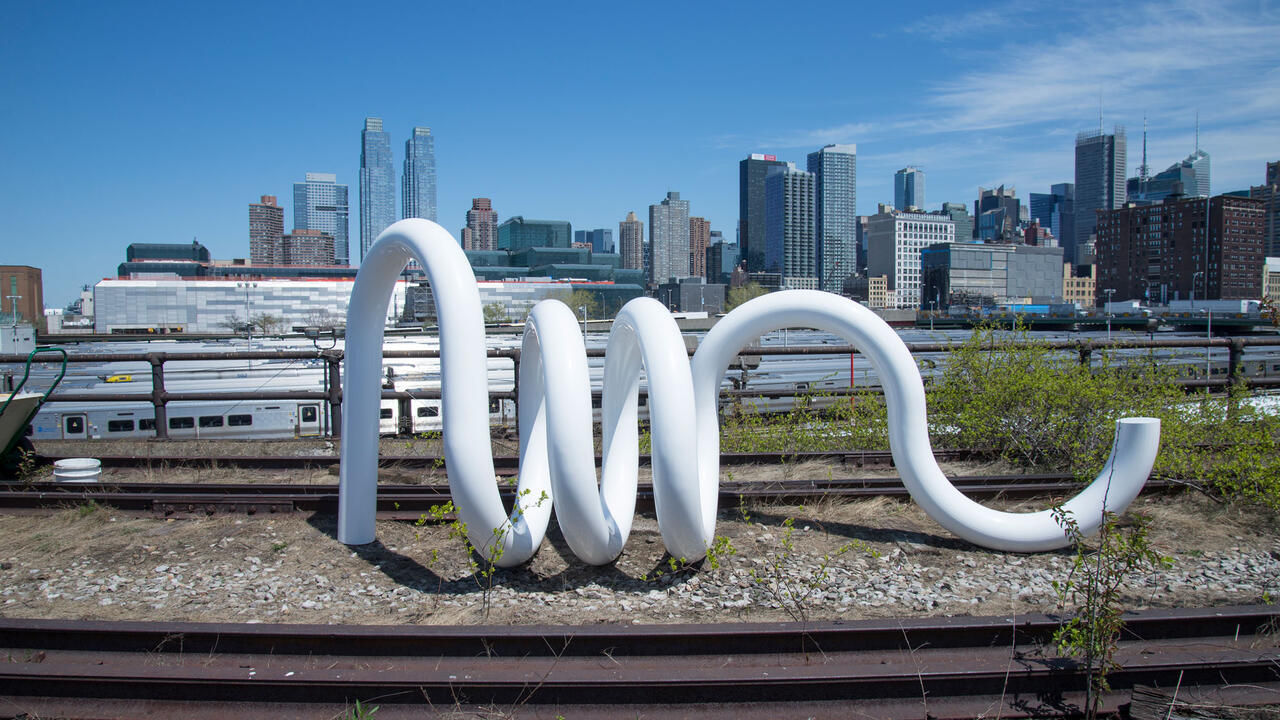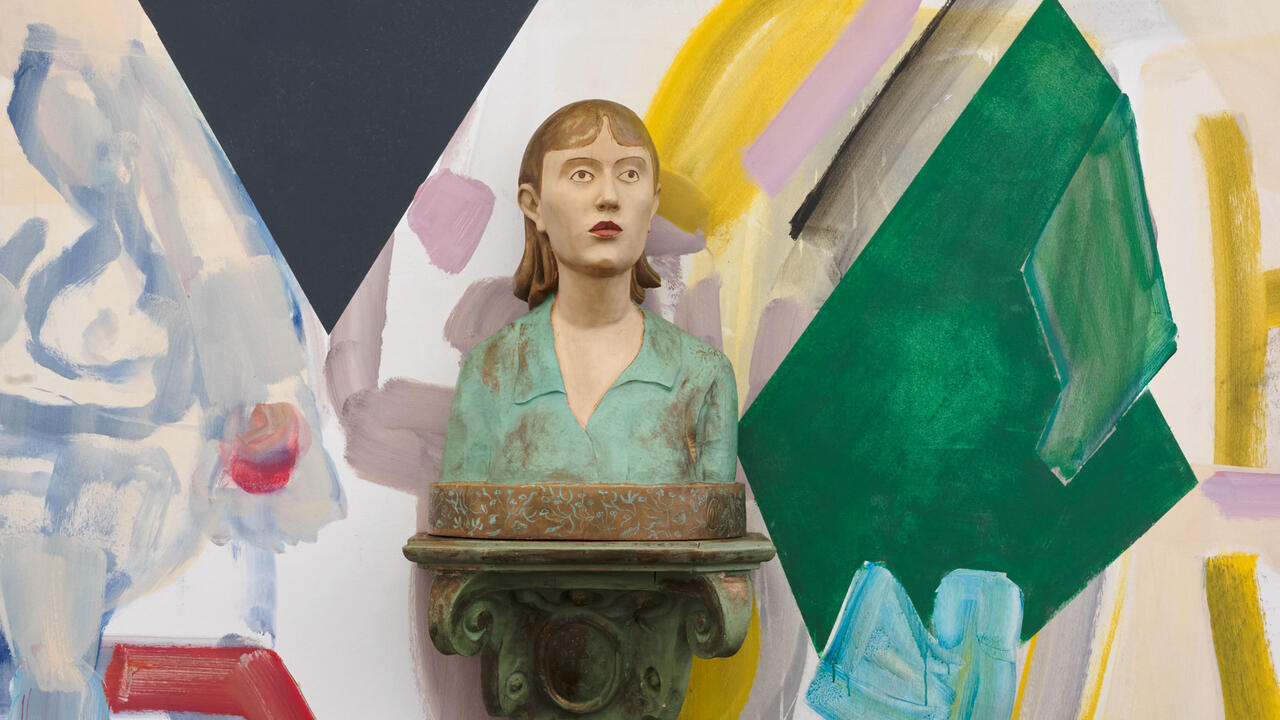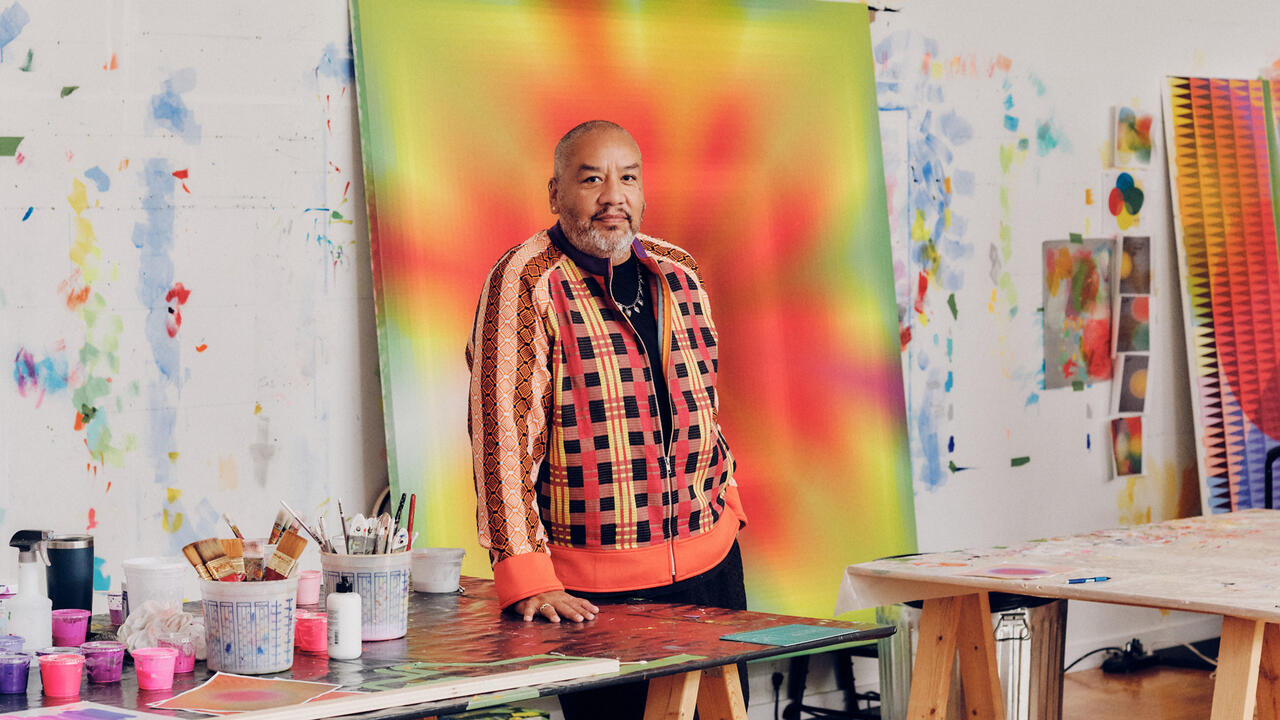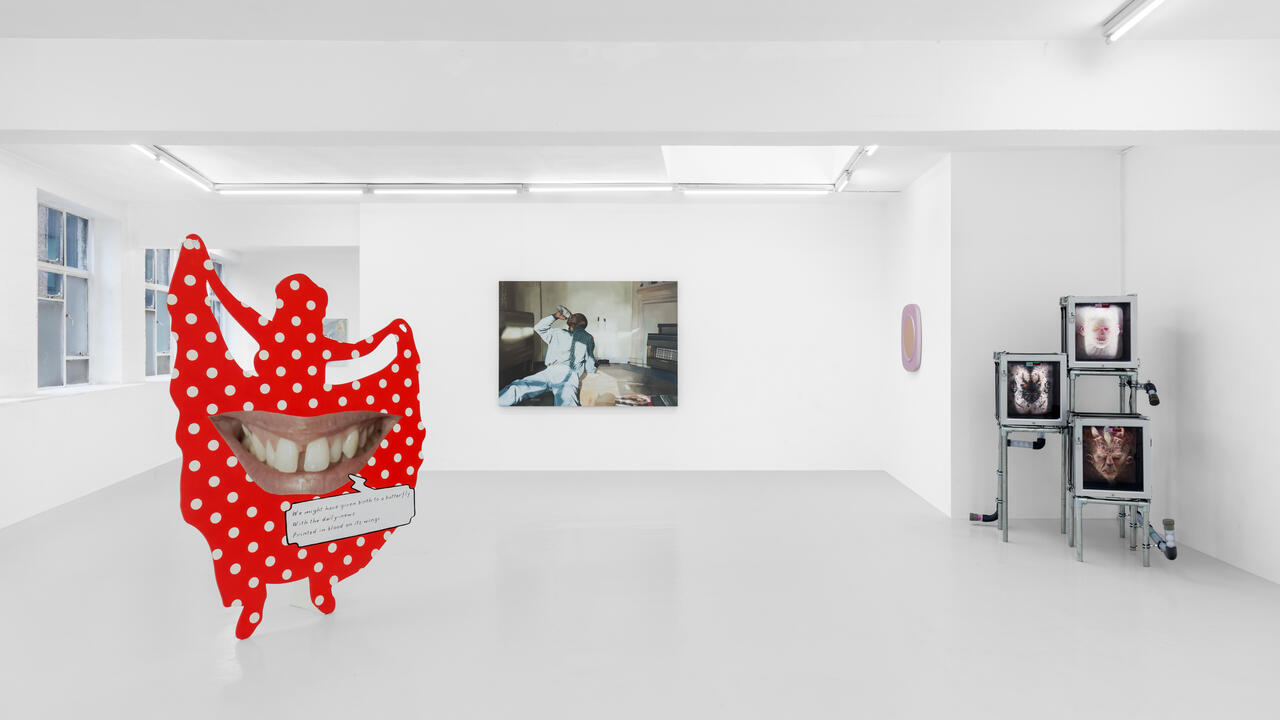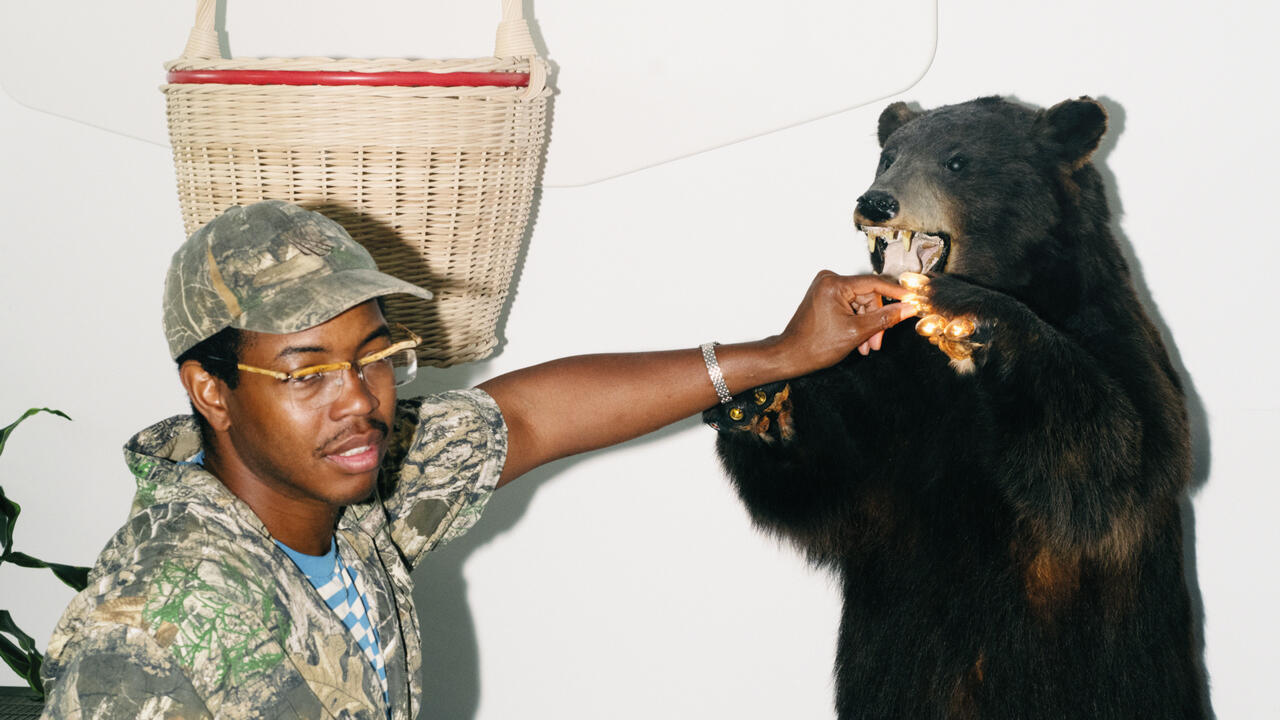The Middle of the Day
Frank Bowling talks about improvisation, ‘poured painting’ and getting advice from Clement Greenberg
Frank Bowling talks about improvisation, ‘poured painting’ and getting advice from Clement Greenberg

Born in Guyana in 1936, Frank Bowling RA, OBE, moved to London, UK, in 1950 and graduated from the Royal College of Art in 1962. In the mid-1960s, he relocated to New York. This year, his paintings will be included in ‘British Design 1948–2012: Innovation in the Modern Age’ at the Victoria and Albert Museum, London (31 March – 12 August 2012), and ‘Migrations: Journeys into British Art’ at Tate Britain, London (31 January – 12 August 2012). A group of Bowling’s ‘poured paintings’ will be on view at Tate Britain from 30 April 2012 – March 2013. These works date from 1973–78, when Bowling’s work moved from semi-representational to complete abstraction.
COURTNEY J. MARTIN What first led you to pour paint?
FRANK BOWLING After my show at the Whitney Museum of American Art in 1971, I went back to London to my family and friends. I was close to the sculptor Elizabeth Frink, and she invited me to stay in her studio in the south of France in the summer of 1973. I stayed there for about a month, making paintings for an upcoming solo show at Noah Goldowsky Gallery in New York. I’d come to the realization that one of the things that the Abstract Expressionists did was to apply the material directly onto the surface. The new paintings needed to be on a small scale because I had to take them back to London and, from there, send them to New York for the show. I had already made ‘big pictures’ for another show that year at the Center for Inter-American Relations (now the Americas Society) in New York, so the poured paintings were an experiment. I wasn’t the only one – everyone was sort of pouring, staining, dripping, whatever.

CJM So you stained unprimed canvas, painted the canvas with a brush, then poured more paint down the length of the canvas?
FB That’s right. I called this process ‘wet into wet’: pouring paint on top of more paint before it was dry.
CJM How did you continue working when you returned to London?
FB It started with me working in my kitchen at 33 Bessborough Street, which is where I painted Bessboro’ Knights (1976). I thought that I had got something very special in that work; not just the way the paint ran, but the entire piece. It’s composed of two different blues and two whites: titanium white and flake white. The surface came out so rich in variation, so toughly sculptural.
CJM One of your earlier paintings, Who’s Afraid of Barney Newman (1968), brought you into a formal conversation with Barnett Newman’s compositional device, the zip. Was that conversation extended into the poured paintings because of their vertically?
FB I was engaged with all those people, especially Newman. He turned the Mark Rothko shape on its side. You had to have permission to get past Newman. It was like a wall, so I thought you should open it up, open up the surface. My poured surfaces didn’t billow like Rothko’s. Mine billowed like the kind of heat haze that you get in Guyana in the middle of the day. The sun is so hot that the water evaporates, rises and stays still: it is just there. You get a kind of heat haze that is almost impenetrable. If you go outside, you have to go out into the water. I felt those things about these pictures. I had to open it up. I thought that I could challenge geometric abstraction within the rectangle.

CJM And how were they received? Reviews of your exhibitions in the early 1970s use terms like ‘tooth-like’ and ‘phallic’ to describe the shape of the paint on the canvas, while ‘marbling’, ‘puddling’ and ‘oozing’ assume the action of the poured paint meeting the canvas.
FB Everyone thought that the poured paintings were new and entirely fresh. As a young artist, it was to do with Kenneth Noland and Morris Louis. People were saying that Louis was the limit, so I wanted to attack him. Nobody recognized that I was trying to take Louis further – it was never mentioned. The conversation about my work became about ‘what a black artist can do’, not the formal issues. There is a painting called Tony’s Anvil (1975). Red, black, yellow – it has colours that were in your face. It’s quite an electric painting. These kinds of colours were accused of being Caribbean. I had to go every which way and attack colour: primary, secondary, tints, whatever; I had to get it all out – to make the work stand out competitively. The colour, the phallic shapes, it became confused and the formal aspect was not taken seriously.
'My poured surfaces didn't billow like rothko's. Mine billowed like the kind of heat haze you get in Guyana in the middle of the day.'
I felt challenged by what was going on because of the extra-art bits that came to be the whip that beat my back with the poured paintings. People kept talking about waterfalls, phallic references – all of the extra stuff that has nothing to do with painting. I was not allowed to explore the paint possibilities. Every time I did a group of pictures, it had to be nailed down within this black dilemma or Caribbean dilemma. It could be not be taken as art qua art; it had to be socio-political or socio-anthropological. All of those disciplines kept getting in the way of my effort to be a painter, so I had to be constantly on the move. That’s what is happening in the work. When I got to the point that I had something iconic, I had to move on. I had to be like Muhammad Ali and get dancing, because the blows were coming too hard and too fast.
CJM What about the built-up paint on the canvas? The poured paintings have pockets of paint deposits throughout the composition and, in many, layers of paint pool at the bottom edge of the canvas. By the 1980s, your paintings were full of texture and surface contrast made with thick gel paint and pieces of foam.
FB Declared flatness is not illusionistic, but, in the 1960s and ’70s, I was very interested in the argument about the difference between painting and sculpture. Painting has to release certain sculptural aspects, but it also has to retain aspects of the sculptural to hold its own on the wall, in order for it to be a thing. In some of the paintings, you can see where I taped the area that the paint was going to be poured through, so you got that kind of sculptural thereness about it. My practice was to tape down the canvas that was finished, but still wet. I would take the tape off the surface, creating a channel running out of the side of the pour, which was my way of answering that business about the halo that people noticed. That halo was the bleeding of the paint as it ran down the middle and oozed to the edges of the canvas.

CJM Had you made any sculptures then?
FB I had made some sculptures from stacking thin plywood boxes. In London, we were all very much in awe of Anthony Caro and very involved in establishing cultural things in art. I saw that what was given to American art had the British thing about sculpture in it. At the time it was a very heated argument.
CJM And where did your painting rest inside of that argument? Were you releasing the sculptural from the painted surface of the poured work?
FB Yes, I was beginning to move the activity from a cyclopean, one-eyed view to a much more varied practice. I knew I had to make the paintings more varied. It seemed to me, at the time, that everyone was making ‘singular preoccupation’ paintings. I thought that the way ahead lay in multiple ways of perceiving. Painting has to have that kind of structure. The poured paintings had to have a geometric rationale. Whatever was happening – whether it was spilling, dripping, pouring – it all happened within a geometric, structural intention.
'I was very interested by the ambition of the downtown writers and musicians, like Ornette Coleman. They made me think that improvisation was where it was at.'
CJM You made the last of the poured paintings in 1978 and stopped showing them around the same time.
FB Why did I stop? There were areas of activity that tended to be no-go. Artists had specific areas for their work, their narrow field. You had people making shaped canvas, people making all-over works. I thought that I should rise to the challenge to tackle everything. It seemed that certain artists had their area and you couldn’t move in there. Larry Poons chucked the paint at the canvas, but he was a big strong guy. I am not as strong, so I used a more modest container to throw the paint at the canvas. Jules Olitski had the gel and Noland had the stains. I felt that I should move into all those areas and challenge whoever felt that they owned them. If any of the styles were any use to me, I went for it. Like, for a while, Frank Stella was the one with tape and flat colour. Well, then I used tape to do pouring and running. I decided to go into these shark-infested waters and move. The poured paintings came to a halt, but pouring has not entirely disappeared from my oeuvre. I felt that spreading, bleeding, tightening of the stuff in a repeated rectangle made the edges too tight for the pour. And the pours started getting more on the edge, rather than the middle.
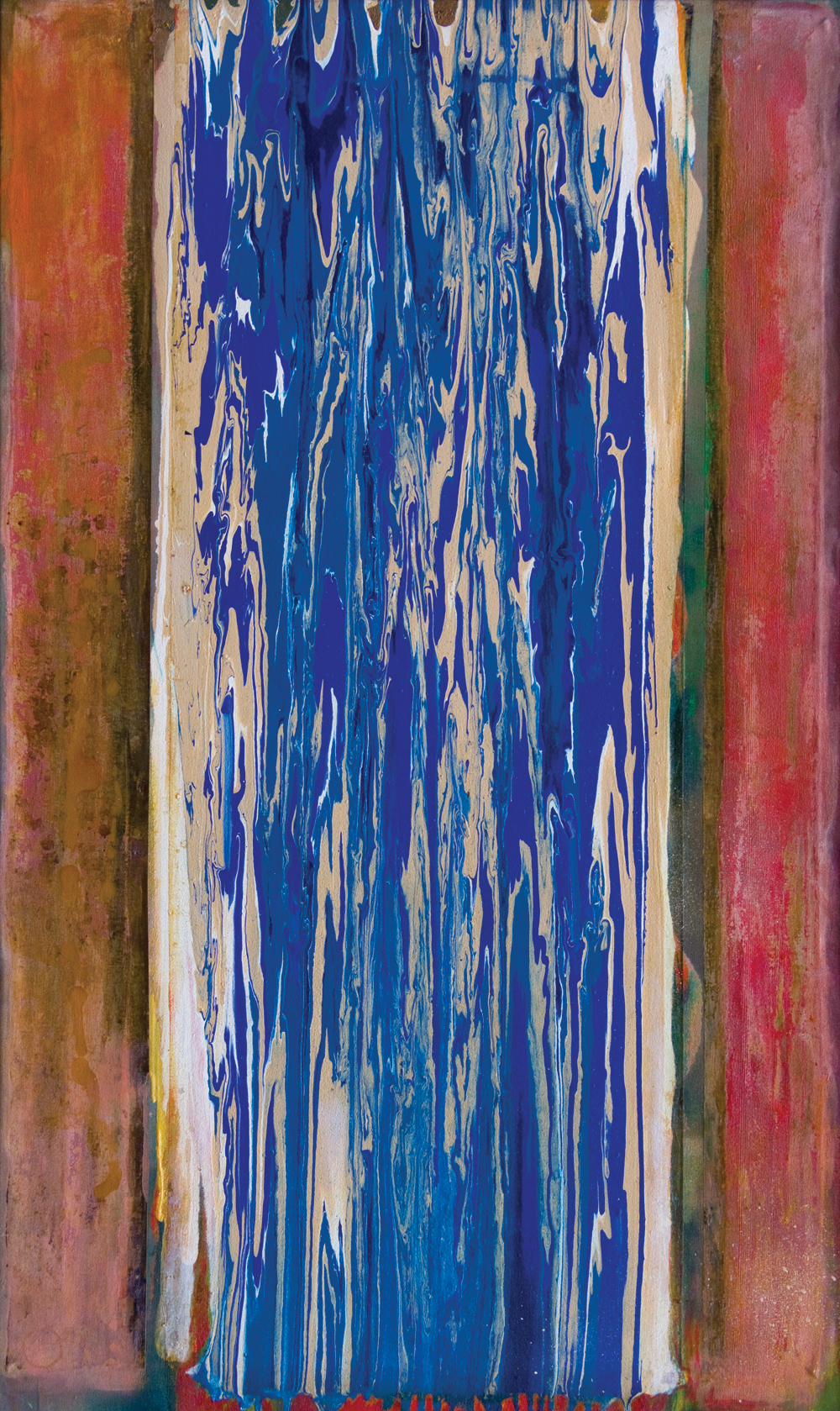
CJM What did Clement Greenberg think about you giving up the poured paintings, since they had been so successful?
FB Clem said, ‘You’re on to something,’ but I read that as being packaged – Colour Field painting was broad and one had to have one’s own voice. So, ‘You’re on to something’ probably meant that you could run with it for a long time. Most of the people who did do that just stayed there, making stripes or circles or stains. I felt a whole lot more restless; I wasn’t sure about packaging a brand.
CJM So when Greenberg said that you were on to something, you read it as being restrictive?
FB I read it as such because everyone seems to have had his package. Clem wanted me to open up, let it all out. If there was a loud argument about this or that, it was almost always about asserting your area. But I felt that the field was open and I wanted to penetrate it and open it up. I did not want to be locked in. I felt that the one thing that one must be wary of was to be locked in. I had to rise to the challenge. So, I went for it on an intense daily basis. The whole thing was to be free and make professional work: I could go the scales. I was very influenced by the ambition of the downtown (New York) writers and musicians, like Ornette Coleman. They made me think that improvisation was where it was at.
CJM I get your explanation about why you stopped making the poured paintings, but was that decision as hard and fast as you describe it?
FB No, no – I’m sure that it was not that hard and fast. You’re probably right to think that it was a decision that I only made afterwards, as an explanation for stopping. But most of the ways of proceeding that I developed over my 50-year career as an artist, I keep trying to use in different ways. You know, I keep going back to spilling, dripping, pouring. Often enough, nowadays, when I dump the material down on a surface and it is not going the way I thought that it would, I get a brush out and push it. I wouldn’t let it do its own alchemy. I would help it along.









